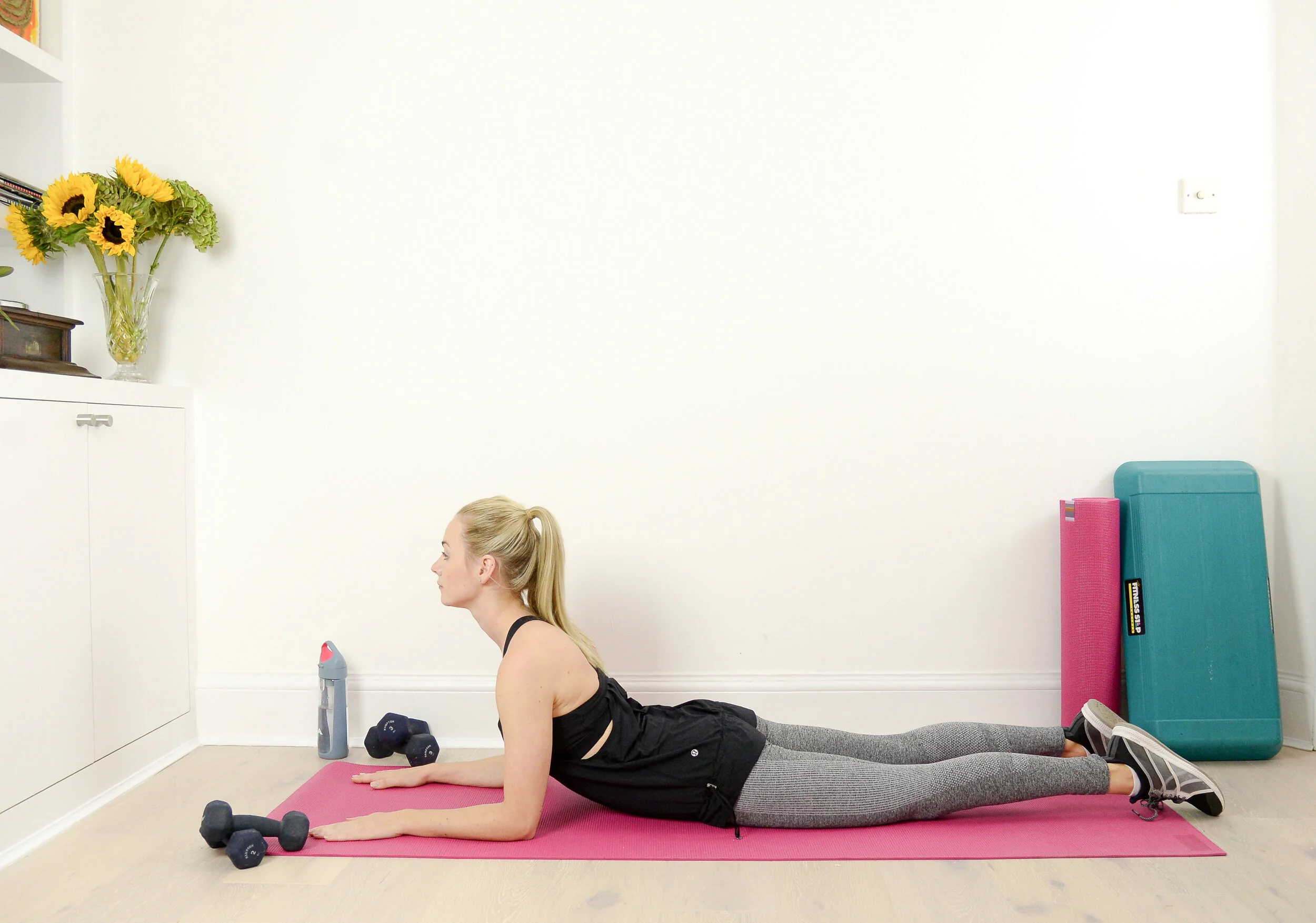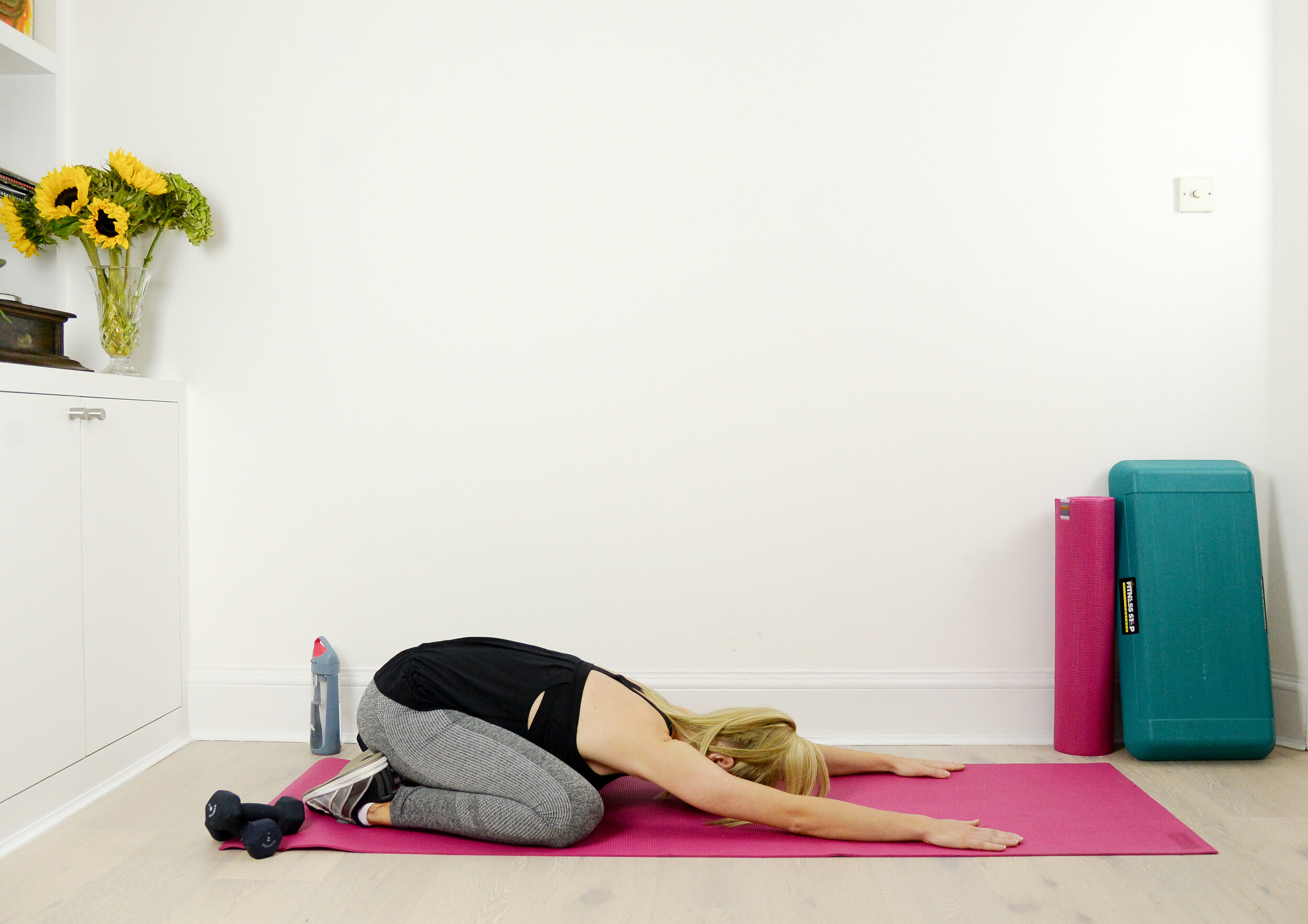Yoga For Postpartum Recovery & Our 5 Favorite Poses
Life changes in big ways after you have a baby -- and during the "fourth trimester", you’re probably feeling a mixture of exhausted, joyful, confused, sore, and a bit different than you did before. A great way to ground yourself, ease back into an exercise routine, and get you in touch with your changing body is through yoga.
We've talked about the benefits of yoga during pregnancy, and just how great it can be for your body and mind when you're expecting. But postnatal yoga is just as good for you! It can help with the general stress and fatigue that comes with new motherhood and making daily flows a part of your routine can ease the transition you are going through.
We've recently added yoga flows for motherhood on the Fitness Studio, but during that postpartum recovery period, you'll want to take some extra precautions while getting back into the practice. To get you started, we've got 5 of our favorite postpartum-safe poses that will help you regain muscle tone, release tension, and play a role in healing your body after birth.
Before we jump in, there are a few things we want you to keep in mind:
Take it slow
Your body has been through a lot -- so there's no need for speed! Go slowly and listen to what every stretch and each movement tells you.
Don't ignore discomfort
You've had a baby; you know how to push through pain and discomfort. But, that's not the attitude to have when it comes to your exercise routine right now, yoga included. While recovering from birth you're more prone to injury, and hurting yourself only prolongs the recovery period. If any movements cause pain, don't push through. Ease out of it and give yourself the time you need to heal.
Follow stretching guidelines
Remember those elevated relaxin levels during pregnancy? They loosened your ligaments to make room for baby and prepare your body for childbirth. But, just because you're no longer pregnant doesn't mean you're clear of it! Relaxin levels remain elevated for up to 5 months after birth, so during that time, keep your stretches to 90% capacity and be sure you're not bouncing into the stretch to extend it.
Go easy on the abs
Gentle stretches and certain poses may be safe in the first few weeks after birth, but one thing you'll definitely want to steer clear of is any ab work until you get full clearance from your doctor to resume exercise. It's standard to wait 6 weeks after vaginal birth and 8-12 weeks after a C-section.
However, before you get into any core, you should focus on strengthening your pelvic floor -- the basket-like group of muscles that help you "hold it" and also form the foundational of your core strength. These you can start doing as soon as you don't feel any pain 'down there'.
We've picked 5 of our favorite yoga poses to support postpartum recovery. You can do them alone, combined into your own routine, or follow along in the order below for a simple flow.
5 Yoga Poses To Support Postpartum Recovery
1. Downward-facing dog
You've probably done downward-facing dog 100 times before, but it may feel a bit different as your glutes and hamstrings have likely tightened from balancing your baby bump during pregnancy.
Start with your heels lifted and focus on getting into a comfortable, sustainable position. Slowly shift your weight between each foot, and if you want to add a little extra stretch for your calf muscles, bicycle your feet back and forth. Hold this pose for 15-30 seconds, breathing steadily.
Downward Dog Benefits for Postpartum Recovery:
Strengthens arms and shoulders, important for feeding baby
Increases blood flow to the brain, boosting mood and decreasing anxiety
Gentle core and back strengthening
2. Sphinx
From the downward dog position, roll your body slowly into a high plank, drop your knees and lower to the ground. Place your elbows next to your chest and gently press upwards, opening your chest. Your elbows should feel as though they're pulling back towards your feet. Focus on extending your neck, keeping shoulders relaxed and maintaining your breath. Hold the position for 5-10 seconds, then release and rest your forehead on the mat. Repeat 5 times.
Note: Avoid the Sphinx pose if you've had a C-section or have diastasis recti. The stretching motion of lifting your chest can place too much strain on your already-stretched abdominals, and it can worsen the separation of your abs.
Sphinx Pose Benefits for Postpartum Recovery:
Release chest and shoulder tension (from feeding and holding your growing baby!)
Soothe tightness and pain in your lower back
This pose is suggested to be helpful for fatigue, too!
3. Wide-Legged Child's Pose with Kegels
Press out of the Sphinx pose by lifting your hips, and then letting them settle back over your feet. Spread your knees while keeping your toes together so that your legs form a "V" shape. Lower your chest to the floor, pressing your forehead into the mat, and extend your arms while spreading your fingers. We like to add Kegel exercises into child's pose as well. Contract the muscles you'd use to "hold it": squeeze for 5, hold for 5, then release for 5. Repeat this 5-8 times.
Child's Pose Benefits for Postpartum Recovery:
Help release neck, upper back, and chest pain or tightness
Loosen up stiff hips while gently stretching glutes and lower back
This pose is a well-known stress reliever -- so important for new moms!
4. Cat/Cow
Slowly press out of child's pose and come into a tabletop position: on your hands and knees with your back flat and shoulders and hips in line. On an inhale, drop your belly while lifting your chest and shoulders--this is cow pose. When you exhale, draw your belly button into your spine and round your back, pulling your tummy upward into cat pose. Repeat this sequence 5 times, being sure to focus on your breath for each pose.
Note: If you're suffering from diastasis recti, skip the cow part of this exercise. Instead, switch between tabletop and cat, being sure to breathe through each movement. Even if your abs are intact, be careful to not overstretch your abdomen during cow pose--we want to strengthen your core muscles, not overextend them!
Cat/Cow Benefits for Postpartum Recovery:
Beneficial for regaining good posture and balance
Increases spinal strength and flexibility
This pose is known for helping create emotional balance as well
5. Warrior 1 to Warrior 2
We want you to come out of your yoga flow feeling strong. Warrior poses do just that, so that's why we've got this as your last pose for postpartum recovery.
From your hands and knees, press up and into downward-facing dog. Bicycle your feet back and forth to loosen your legs and then step your right foot between your hands and rotate your back foot so that it's perpendicular to your front. Make sure your heels are in line and hips are square. Lift your torso and raise your arms overhead, facing forward, keeping your front knee bent at a 90-degree angle. Breathe through this Warrior 1 pose for 5 slow breaths, then switch sides.
Switch into Warrior 2 by rotating your arms in line with your legs, extending your right arm forward, and keeping your gaze focused in that direction. Keep your core lightly engaged and shoulders stacked over your pelvis. Make sure you're not leaning forward too much -- your knee should not be bowing in or out to either side, and it should stay behind your front foot. Take 5 breaths in this pose, then repeat on the other side.
Warrior Pose Benefits for Postpartum Recovery:
Build strength, stability, and endurance -- all important things after giving birth!
This is an energizing pose as it increases circulation
Warrior poses also help with concentration and staying grounded
Want more yoga? We've got calming nighttime flows, hip-opening routines, and more for motherhood on our newly updated iOS app and Android app!



